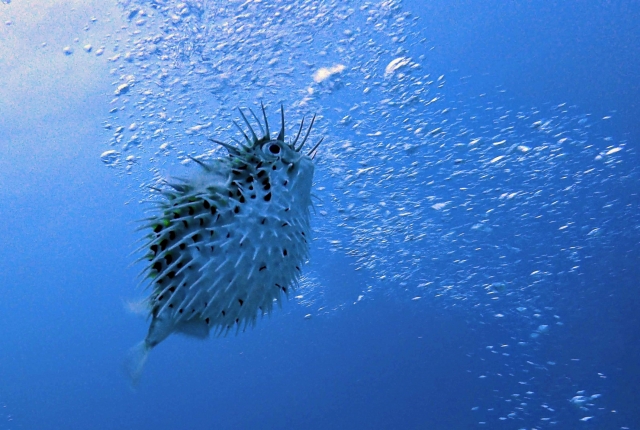Harisenbon (ハリセンボン – Porcupinefish)
Harisenbon
ハリセンボン
“Porcupinefish” is referred to as ‘harisenbon‘ (ハリセンボン) in Japanese.
日本語で「ハリセンボン」と呼ばれる魚がいます。
I think that it is easy for most Japanese people to imagine the figure of this fish,
多くの日本人にとって、この言葉からどんな魚であるかを想像するのは簡単だと思います。
Because ‘hari‘ (ハリ) means “spine” or “needle,” ‘senbon‘ (センボン) means “one thousand” or “many,” and ‘harisenbon’ have a lot of spines/needles on their bodies.
なぜなら、「ハリ」は “spine” や “needle,” 「センボン」は “one thousand” や “many” を意味し、「ハリセンボン」は体に多くの棘を有しているからです。
Some Japanese people might think that they have around one thousand spines, but the actual number of spines is around 350.
体に約1000本の棘があると勘違いする日本人もいるかもしれませんが、実際の棘の数は約350本前後だそうです。
Incidentally, the English name “porcupinefish” is derived from “porcupine,” which also have a lot of needles on their bodies.
ちなみに、英名の “porcupinefish” は、多くの棘を持つヤマアラシ (“porcupine”) に由来します。
In addition, “porcupine” comes from the old French “porc-épic,” the literal meaning of which is “spiny pig.”
さらに “porcupine” は、「棘だらけの豚」を意味する古フランス語 “porc-épic” から来ているそうです。




